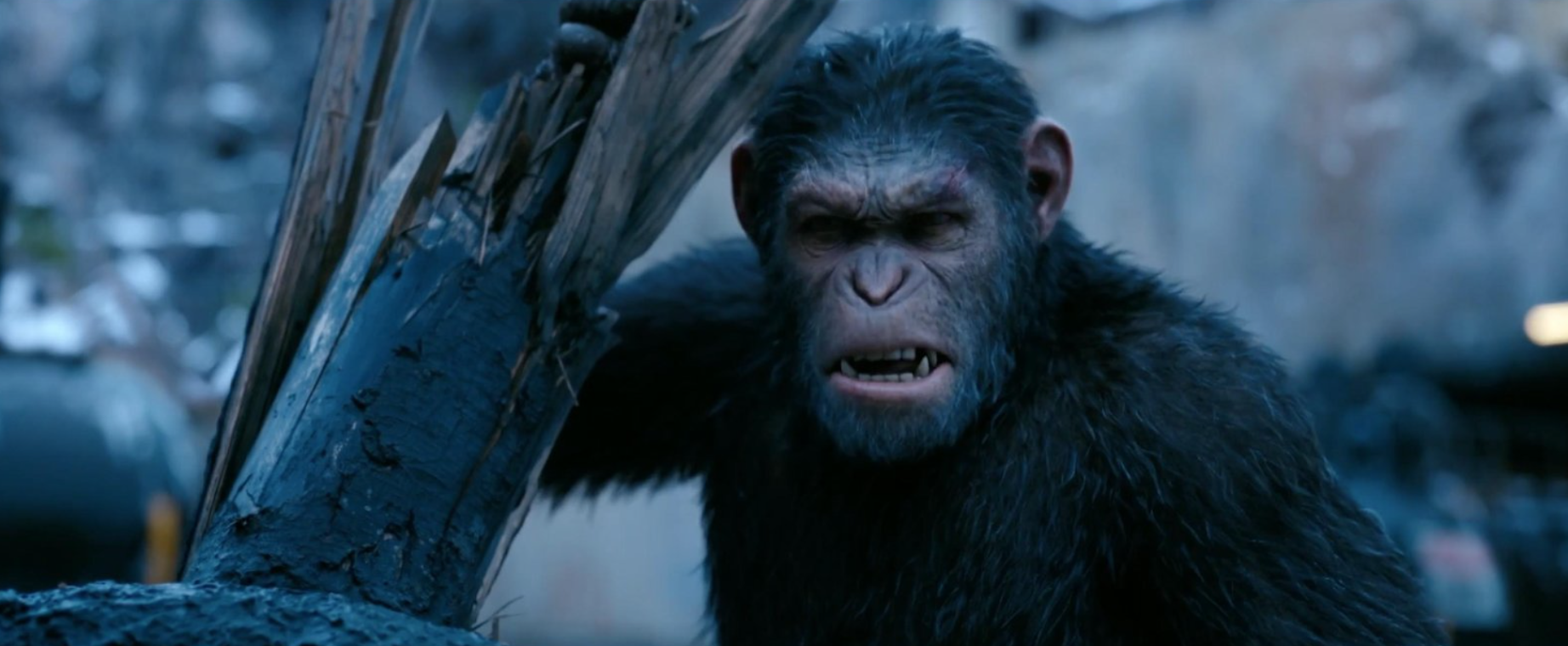 Review of “War for the Planet of the Apes”
Review of “War for the Planet of the Apes”
BY VINCENT ABBATECOLA
The “Planet of the Apes” prequel trilogy is a film series that began with laying the groundwork for what looked to be an epic story. When “Rise of the Planet of the Apes” was released in 2011, the striking visual effects, stunning motion-capture performance from Andy Serkis (a master of such performances) and the creation of a growing tension between the apes and humans proved that there was considerable potential in the series. Once “Dawn of the Planet of the Apes” debuted three years later, it became clearer that this trilogy could possibly conclude with something great.
Director Matt Reeves, who helmed “Dawn,” returns to finish the story in the third installment, “War for the Planet of the Apes.” With a thrilling and emotional story, flawless special effects, and another strong performance from Serkis, “War” solidifies the “Planet of the Apes” prequel trilogy as one of the best film trilogies of our time.
Some time after the events of “Dawn,” chimpanzee Caesar (Serkis), lives deep in the forest with his family and fellow simians, whom he leads. When a tragedy strikes at the hands of a group of soldiers, Caesar and some of his closest allies go on a journey to face off against the soldiers and their leader, The Colonel (Woody Harrelson).
Serkis has built an impressive array of motion-capture performances over the last 15 years, having such roles in the “Lord of the Rings” trilogy and “King Kong,” and Caesar has probably become one of his finest pieces of work as he continues to blur the lines between his acting abilities and the technical proficiencies that are used to bring his performances to life. Because of how well the technology captures Serkis’ expressions, you can practically see the actor behind the CGI. This is a character Serkis has played for three films, and we’ve seen him go through a fascinating transformation of the character, from Caesar first learning about the world as a young chimp to him leading his own tribe to him having to fight the humans who want to eradicate them, and it speaks to Serkis’ talent for being able to show the growth of Caesar. This is a series of performances that has defined the possibilities of what actors can do in cinema, and Serkis continues to be a crusader for such prospects.
Although Harrelson only gets a few seconds of screen time within the first hour, the rest of the film gives him a chance to deliver a formidable performance as The Colonel, even though his villainous character is pretty much a copy of Gary Oldman’s in “Dawn.”
The screenplay by Reeves and Mark Bomback gives us the action we expect from the film, but also dedicates time to have an in-depth exploration of Caesar. Through these stretches of the film, we’re shown deeper layers to Caesar’s character as he grapples with his ethics and the want to exact revenge. It’s a fascinating look at the moral dilemmas that Caesar is facing, all of which adds much dramatic weight to his odyssey.
Just as he accomplished with “Dawn,” Reeves doesn’t just make a movie that coasts on its groundbreaking special effects, but instead, makes one that uses this technology to tell an emotional story and create flawless CGI characters to whom we establish connections. He also uses minimal dialogue in certain scenes to wonderful effect, and it’s in these segments of the film where he allows the images to speak for themselves, such as in the opening shot where the camera lingers on a group of soldiers as they walk out of the foreground and sneak their way into the apes’ territory.
With the help of cinematography by Michael Seresin, who lensed “Dawn,” Reeves’ film offers stunning views of the film’s landscapes, such as the forest in which Caesar and his tribe live, a sandy shore, and the movie’s many winterized terrains, all of which are sights that should be viewed on a big screen. Even when some of these images carry an apocalyptic look, they’re still gorgeously realized and framed in such a way that makes you realize the grand scope of the world these characters inhabit.
A trilogy can be tricky to pull off. Sometimes you’ll get ones like “The Lord of the Rings,” where the movies remain outstanding throughout the series; and other times, you’ll get ones like the original “Star Wars” trilogy and original “X-Men” trilogy, where you’ll have a great first movie, an even better second film, but then have the trilogy experience drop in quality for the final movie. Thankfully, “War for the Planet of the Apes” falls into the former category and delivers an epic finale that concludes this trilogy in awe-inspiring fashion. In a summer that has seen the fifth (and pointless) installments of both the “Transformers” and “Pirates of the Caribbean” series, this is a film that manages to have both narrative ambition and blockbuster vision, all part of a trilogy that has crafted a story that builds from movie to movie without losing any of its momentum. All film series should display this level of artistry, so take this chance to see the end to one of the best in a while.
Final Grade: A-

You must be logged in to post a comment Login